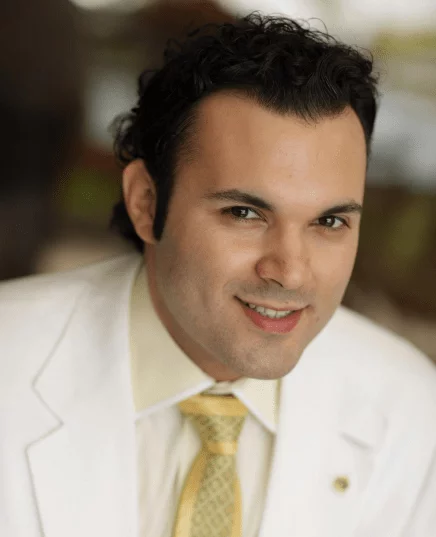If you are going for a PRP treatment within the next few days, you might be concerned about how to deal with the pain associated with this cosmetic procedure!
PRP, or platelet-rich plasma, injections are an increasingly popular alternative to surgery and other painful medical treatments due to their natural healing properties. However, one downside of PRP injections is that the process can be pretty uncomfortable.
Fortunately, numbing creams are available that can help numb the skin during the injection process. Some are topical, while others are prescription-based- so you should talk to your doctor before putting anything on! Remember, there are side effects of such creams too!
Let’s have a look at a few that work well!
PRP With Numbing Creams
The good news is that this procedure doesn’t have to be as painful as you think! Many numbing creams are on the market, with different benefits and side effects. Here’s a look at some popular types of numbness creams, what they do, and their potential risks.
- Lidocaine: A lidocaine numbing cream can be used before injections or procedures to help reduce pain or discomfort. You should not apply it more than forty-five minutes beforehand. However, Possible side effects include allergic reactions to sensitive skin.
- Benzocaine: Benzocaine works similarly to lidocaine but is less potent. It also has a shorter shelf life (one year), so check your expiration date.
- Tetracaine: It works faster than benzocaine and lidocaine but only works for about 30 minutes. This is a popular choice because it has a low risk for allergic reactions but has some adverse side effects, including dizziness and headaches.
How to Make PRP Less Painful?
PRP injections are a quick procedure that usually only takes a few minutes. The numbing cream is applied to the area where you will be receiving the injection. A topical anesthetic may also be used on the surface to help with any discomfort.
There are two types of numbing creams: topical anesthetic cream, which is applied before the injection, and local anesthetic cream, which is applied after the injection or is prescribed by your doctor for use when the injected area feels sore.
Can Scalp Numbing Cream Be Used As Face Numbing Cream For PRP?
Scalp numbing cream can be used as face numbing cream for PRP injections to help ease the pain of the process. While scalp numbing cream typically contains a topical anesthetic, it is not the same as the numbing creams specially formulated for the face.
The ingredients in scalp numbing cream may not be safe on your skin, so you should always do a patch test before using any facial numbing cream.
Side Effects of Numbing Creams
While applying numbing cream can effectively decrease pain, it may lead to some adverse effects.
Numbness is a PRP numbing cream’s most common side effect, but some people may experience burning or itching sensations. These adverse effects may include skin irritation, redness, swelling, dry or sensitive skin, hives, or rash.
If you are going through a numbing cream treatment with a physician or doctor, ask if any of these side effects will occur.
FAQ
Can numbing cream work on scalp PRP?
Numbing cream can be a great way to reduce the pain associated with a PRP injection. It works by numbing the injected area, which will also help you feel less pressure. You can also use it to numb your scalp before getting a hair PRP procedure.
What types of numbing creams for PRP are available in the market?
The two leading numbing creams available today are topical anesthetic and nerve-blocking agents. Topical anesthetic creams decrease pain signals to the brain, while nerve-blocking agents interfere with nerve function by targeting specific receptors.
How to get rid of pain after PRP at home?
Menthol has been shown to relieve minor soreness and pains after the procedure. It can also ease muscle aches, headaches, and sore throats. You can also use ice packs to alleviate soreness or redness after PRP procedures.
Final Thought
Numbing cream can help decrease the pain associated with PRP injections and help you get through the procedure without feeling sore afterward.
However, many people don’t realize that there are different kinds of numbing creams available, and not all of them work equally well. So it’s essential to research their benefits and side effects before deciding which is best for you.

![3 Types of Numbing Cream for PRP Injections [Effects and Side Effects]](https://prptreatmentbeverlyhills.com/wp-content/uploads/2022/12/3-Types-of-Numbing-Cream-for-PRP-Injections.jpg 1280w, https://prptreatmentbeverlyhills.com/wp-content/uploads/2022/12/3-Types-of-Numbing-Cream-for-PRP-Injections-300x169.jpg 300w, https://prptreatmentbeverlyhills.com/wp-content/uploads/2022/12/3-Types-of-Numbing-Cream-for-PRP-Injections-1024x576.jpg 1024w, https://prptreatmentbeverlyhills.com/wp-content/uploads/2022/12/3-Types-of-Numbing-Cream-for-PRP-Injections-768x432.jpg 768w)




![PRP Injection For Shoulder Tendonitis [Facts & Side Effects]](https://prptreatmentbeverlyhills.com/wp-content/uploads/2022/12/PRP-Injection-For-Shoulder-Tendonitis.jpg 1280w, https://prptreatmentbeverlyhills.com/wp-content/uploads/2022/12/PRP-Injection-For-Shoulder-Tendonitis-300x169.jpg 300w, https://prptreatmentbeverlyhills.com/wp-content/uploads/2022/12/PRP-Injection-For-Shoulder-Tendonitis-1024x576.jpg 1024w, https://prptreatmentbeverlyhills.com/wp-content/uploads/2022/12/PRP-Injection-For-Shoulder-Tendonitis-768x432.jpg 768w)















